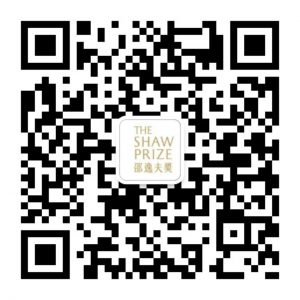The Shaw Prize in Mathematical Sciences 2023 is awarded in equal shares to Vladimir Drinfeld, Harry Pratt Judson Distinguished Service Professor of Mathematics at the University of Chicago, USA and Shing-Tung Yau, Chair Professor at Tsinghua University, PRC, for their contributions related to mathematical physics, to arithmetic geometry, to differential geometry and to Kähler geometry.
They share an interest in mathematical physics. Drinfeld launched with Beilinson the geometric Langlands program, which, to quote Witten, has some common features with aspects of quantum field theory, and yet stems from number theory. Yau worked on mathematical problems arising from general relativity and string theory.
Drinfeld invented at an early age the shtukas (coming from Stück in German, meaning “piece”) in resonance with the Korteweg–de Vries equation in physics. With it, he solved the arithmetic Langlands program over a function field in rank two, for which he was awarded the Fields Medal in 1990. It was then already noticed that his solution proved at the same time a conjecture of Deligne on the existence of compatible ℓ-adic systems in rank two. Remarkably, after the Langlands program over a function field was proven in any rank in 2002 by L Lafforgue, following Drinfeld’s method, Drinfeld could extend the existence of compatible ℓ-adic systems in any rank from function fields to higher-dimensional varieties. This complete solution to the Deligne conjecture has multiple consequences, even in complex geometry.
In today’s p-adic Hodge theory, and in the dreamed Langlands program over a number field, it is expected that Drinfeld’s shtukas should be a key concept as suggested by Scholze’s general conjectures exposed in his ICM 2018 plenary address. Moreover, Drinfeld’s view on Bhatt–Scholze prismatic cohomology and its systems of coefficients led to a new understanding of the theory and to applications.
Drinfeld’s work is a pillar of arithmetic geometry which is at the core of new developments in the field.
Yau developed systematically partial differential equation methods in differential geometry. With these, he solved the Calabi conjecture, for which he was awarded the Fields medal in 1982, the existence of Hermitian Yang–Mills connections (with Uhlenbeck), and the positive mass conjecture (with Schoen) for which they used the theory of minimal surfaces. He introduced geometric methods to important problems in general relativity, which led for example to Schoen–Yau’s black-hole existence theorem and to an intrinsic definition of quasi-local mass in general relativity.
Yau’s work on the existence of a Kähler–Einstein metric led to the solution to the Calabi conjecture, and to the concept of Calabi–Yau manifolds, which are cornerstones both in string theory and in complex geometry. The Strominger−Yau−Zaslow construction has had a major impact on mirror symmetry.
His work (with P Li) on heat kernel estimates and differential Harnack inequalities has changed the analysis of geometric equations on manifolds. It has influenced the development of optimal transportation and Hamilton’s work on Ricci flow.
Yau contributed to the fusion of geometry and analysis, now known as geometric analysis. His work has had a deep and lasting impact on both mathematics and theoretical physics.
Mathematical Sciences Selection Committee
The Shaw Prize
30 May 2023 Hong Kong
